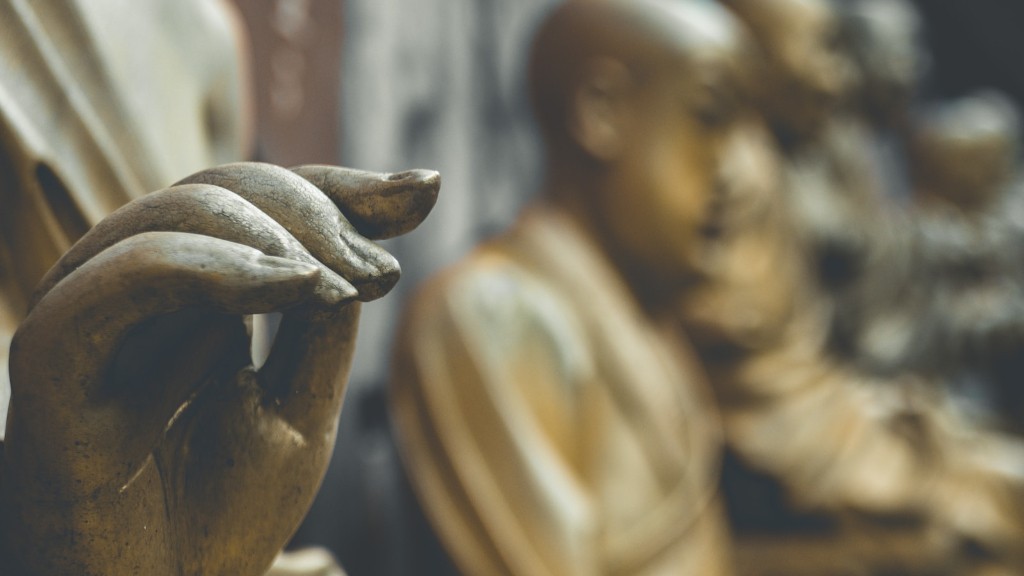Introduction
Hinduism is one of the oldest religions in the world. It has had a long and fascinating history, with a large presence in the Indian subcontinent. The origin of Hinduism dates back to the Vedic period, between 1500 BCE and 500 BCE. The Vedas and Upanishads are the two major scriptures of Hinduism, and their doctrines have shaped the thoughts and beliefs of Hindus throughout the ages. Since then, Hinduism has had a strong presence and influence in India, and has been constantly evolving with time. In this article, we explore the timeline of when Hinduism first came to India and its significance in the history of the region.
Early Hinduism
The earliest evidence of Hinduism comes from the Indus Valley Civilization, which flourished in present-day Pakistan and northwest India sometime between 3300 BCE and 1800 BCE. Scholars believe that the population living in this ancient civilization practiced certain rituals that were similar to those found in Hinduism. While there is still much debate around the nature of the religion practiced in the Indus Valley, archaeological evidence suggests that it was the precursor of Hinduism.
By the time the earliest Vedic texts were composed in India around 1500 BCE, the religion had taken its own unique shape. This early form of Hinduism was based on the Vedas, a large collection of ancient hymns, chants, and religious instructions. The Vedic literature, which was passed down orally for many generations, described the gods and goddesses of Hinduism, their worship, the practice of rituals, and the relationship between humans and the divine.
The Debate Around Dating
There is no precise timeline for when Hinduism first came to India, as opinions vary among scholars. Some scholars argue that established Hinduism was present in India prior to the period of the Vedic literature. Other scholars assert that Hinduism had its origins in the Vedic literature, as it was based on the teachings of the Vedas.
Many experts suggest that Hinduism evolved gradually, with some practices and core beliefs coming from the Indus Valley civilization, while others arriving later in the form of the Vedas. This suggests that the religion was constantly evolving and adapting to the changing times.
Spread of Hinduism
By the early centuries of the Common Era, Hinduism had become the dominant religion of India and its influences spread far and wide. It was during this period that Buddhism and Jainism, two of the major religions of India, were at their peak. Hindus also interacted and shared cultural practices with other religious communities in the region.
During this time, many regional elements from different religions and beliefs were blended into Hinduism. This led to a richer and more adaptable version of the religion. This version of Hinduism, which is also known as “Vedic Symbiogenic Hinduism”, was more inclusive, allowing people to practice along with a variety of religious traditions.
The Impact of Hinduism
Hinduism is still the predominant religion in India and has had an immense impact on the culture, art, and literature of the country. It is a complex faith that is rooted in diverse branches, with each one offering unique interpretations of the religion. There are many sects and beliefs within Hinduism, which makes it a vibrant faith that continues to evolve with every passing generation.
Hinduism has had a profound effect on various aspects of life in India. It is an integral part of the society and influences everything from politics to art. Hinduism has been the source of many philosophical and spiritual ideas that have inspired people both in India and around the world.
Hinduism in Modern Times
In modern times, Hinduism is still thriving in its native land. As a result of immigration, it has also spread to other parts of the world and can now be found in many countries.
Though Hinduism is a very ancient faith, it is constantly evolving in modern times. Many new offshoots have emerged and are gaining traction. These new interpretations are a mix of old and new ideas, as they blend traditional Hindu teachings with modern cultural influences.
Practices of Hinduism
Hinduism is a diverse faith, with many different practices. Some of the common beliefs and rituals in Hinduism include worshipping Gods and Goddesses, performing daily prayers, celebrating festivals, reading sacred texts, and doing regular temple visits.
Hindus also practice a range of rituals that are specific to their faith, such as offering puja (worship with different items such as food and flowers) to Gods, chanting mantras, performing yoga, fasting and meditating. All these practices are integral to the religion and are aimed at connecting followers with their divine source.
Social Impact of Hinduism
Hinduism has had a strong impact on the social structure of Indian society. It has encouraged the caste system, which is still a major influence on the way people interact and view each other in India. It has had a major influence on the social life of Indians, especially around marriage, inheritance and work.
Hinduism has been a source of social norms, such as arranged marriages, gender roles, and family values. It also promotes traditional values and beliefs, such as respect for all living creatures and upholding social responsibility. Over the centuries, these values have become ingrained in the way people think and act.
Conclusion
Hinduism has been a part of India for thousands of years, and it has evolved over time, adapting to the changing times. It has a deep impact on Indian culture and society and continues to evolve even in modern times. Despite its ancient roots, it is still thriving and spreading its influence in different parts of the world.
